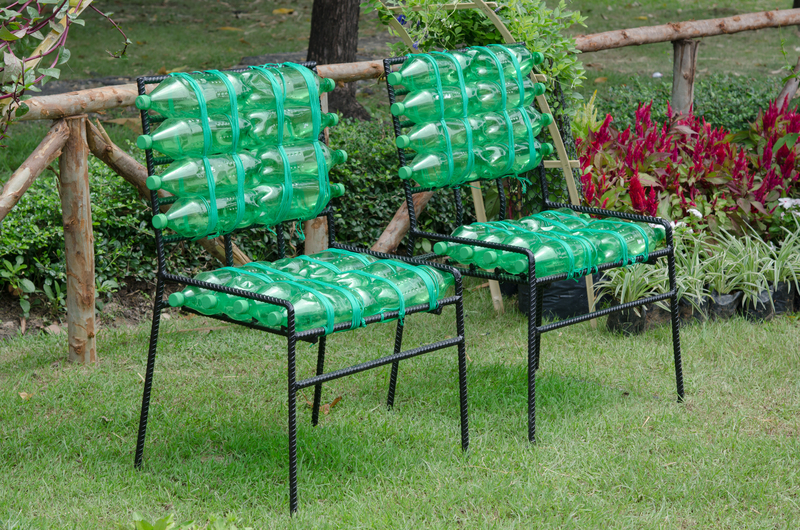Green Waste Solutions for a Cleaner Earth
Posted on 18/01/2025
Understanding Green Waste
Green waste, also known as biodegradable waste, includes a variety of organic materials that are often discarded. This category of waste is generated from households, gardens, parks, and even food processing industries. Typical examples include:
- Grass clippings
- Leaves
- Pruned branches
- Weeds
- Fruit and vegetable scraps
- Coffee grounds
As this waste decomposes, it releases methane, a potent greenhouse gas, if not managed properly. Therefore, addressing the challenges posed by green waste is essential for environmental sustainability.

Composting: A Natural Solution
One of the most effective green waste solutions is composting. Composting is the process of breaking down organic material into a nutrient-rich soil amendment that can be used to enhance garden soil. By composting green waste, we can reduce the volume of waste sent to landfills, lower greenhouse gas emissions, and produce a valuable resource for gardening and agriculture.
There are various methods of composting tailored to different needs and conditions:
Home Composting
Home composting is an excellent way for individuals to manage their green waste. Kitchen scraps and yard waste can be composted in small bins or compost piles. To create a balanced compost, it's essential to mix greens (nitrogen-rich materials) with browns (carbon-rich materials).
Community Composting
For those without the space or time for home composting, many communities offer composting programs. Residents can drop off their green waste at designated locations, where it is processed into compost for community gardens and landscapes.
Industrial Composting
On a larger scale, industrial composting facilities can handle significant volumes of green waste. These facilities use advanced techniques to accelerate the composting process and ensure that the final product is free from contaminants.
Vermiculture: Composting with Worms
Vermiculture, or worm composting, is another innovative green waste solution. This method uses specific worm species, such as red wigglers, to decompose organic material rapidly. The worms consume waste and excrete nutrient-rich castings, which serve as excellent fertilizer.
Vermiculture's benefits include:
Faster decomposition: Worms break down organic material more quickly than traditional composting methods.
Space efficiency: Suitable for indoor or small-space composting.
High-quality compost: Worm castings are rich in nutrients and beneficial microbes.
Green Waste Collection and Recycling Programs
To manage green waste efficiently, many municipalities have instituted green waste collection and recycling programs. These programs offer residents the opportunity to dispose of their organic waste responsibly.
Key elements of successful green waste programs include:
Curbside Collection
Many cities provide curbside collection services for green waste. Residents place their yard clippings, leaves, and other organic material in designated bins, which are then collected and transported to composting facilities.
Drop-off Sites
In addition to curbside collection, some communities have drop-off sites where residents can bring their green waste. This approach provides flexibility for those who may accumulate green waste irregularly.
Education and Outreach
Effective green waste management programs also prioritize education and outreach. Informing residents about the importance of separating green waste and how to participate in composting initiatives is crucial for program success.
Innovative Technologies in Green Waste Management
The field of green waste management has seen significant technological advancements in recent years. These innovations are helping to optimize the process and minimize environmental impact.
Anaerobic Digestion
Anaerobic digestion is a process that converts organic waste into biogas and digestate. Biogas can be used as a renewable energy source, while the digestate can be used as fertilizer. This technology is especially useful for managing food waste.
Biochar Production
Biochar is a carbon-rich product obtained by heating organic material in the absence of oxygen. It can improve soil health and sequester carbon, making it a valuable byproduct of green waste management.
Mechanical Biological Treatment (MBT)
MBT facilities mechanically sort and biologically treat mixed waste, separating organics from recyclables and residual waste. This technology helps maximize the recovery of compostable material.

Policy and Legislation
Government policies and legislation play a vital role in promoting green waste solutions. By setting regulations and providing incentives, governments can encourage responsible waste management practices.
Examples of impactful legislation include:
Landfill Bans
Several regions have implemented bans on disposing of green waste in landfills. These policies compel individuals and businesses to seek alternative disposal methods, such as composting or recycling.
Incentives for Composting
Financial incentives, such as tax breaks or grants, can encourage individuals and businesses to invest in composting infrastructure and participate in green waste programs.
Education and Outreach Programs
Governments can also fund educational campaigns to raise awareness about the benefits of green waste management and how to participate in local programs.
Conclusion: The Path Forward
As we strive for a cleaner earth, implementing green waste solutions is a critical step towards a more sustainable future. By embracing composting, vermiculture, green waste collection programs, and innovative technologies, we can reduce landfill waste, lower greenhouse gas emissions, and create valuable resources for agriculture and gardening.
Collaboration between governments, communities, and individuals is essential for the success of green waste initiatives. With informed policies, robust infrastructure, and widespread participation, we can significantly mitigate the environmental impact of organic waste and contribute to a healthier planet.










